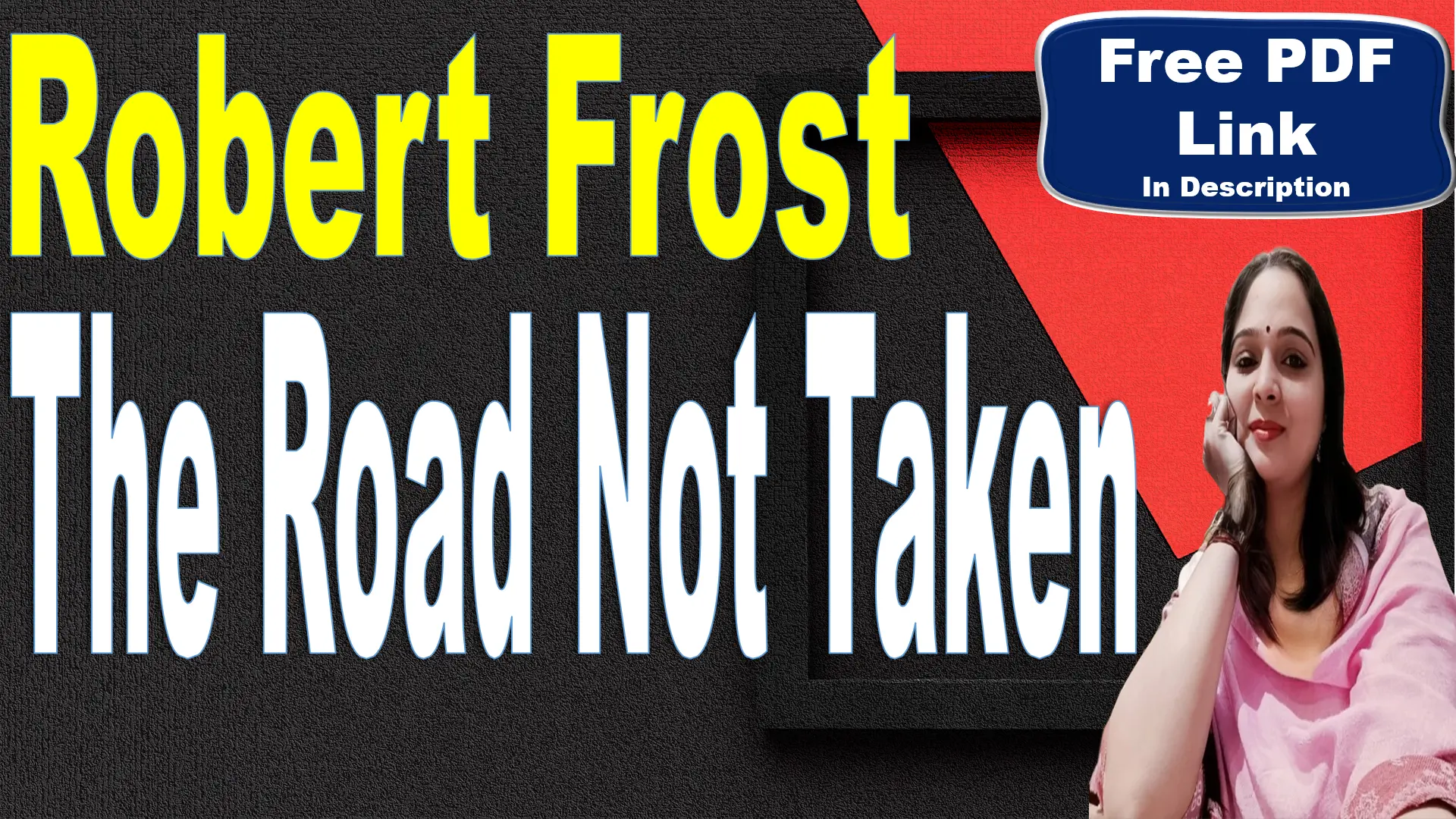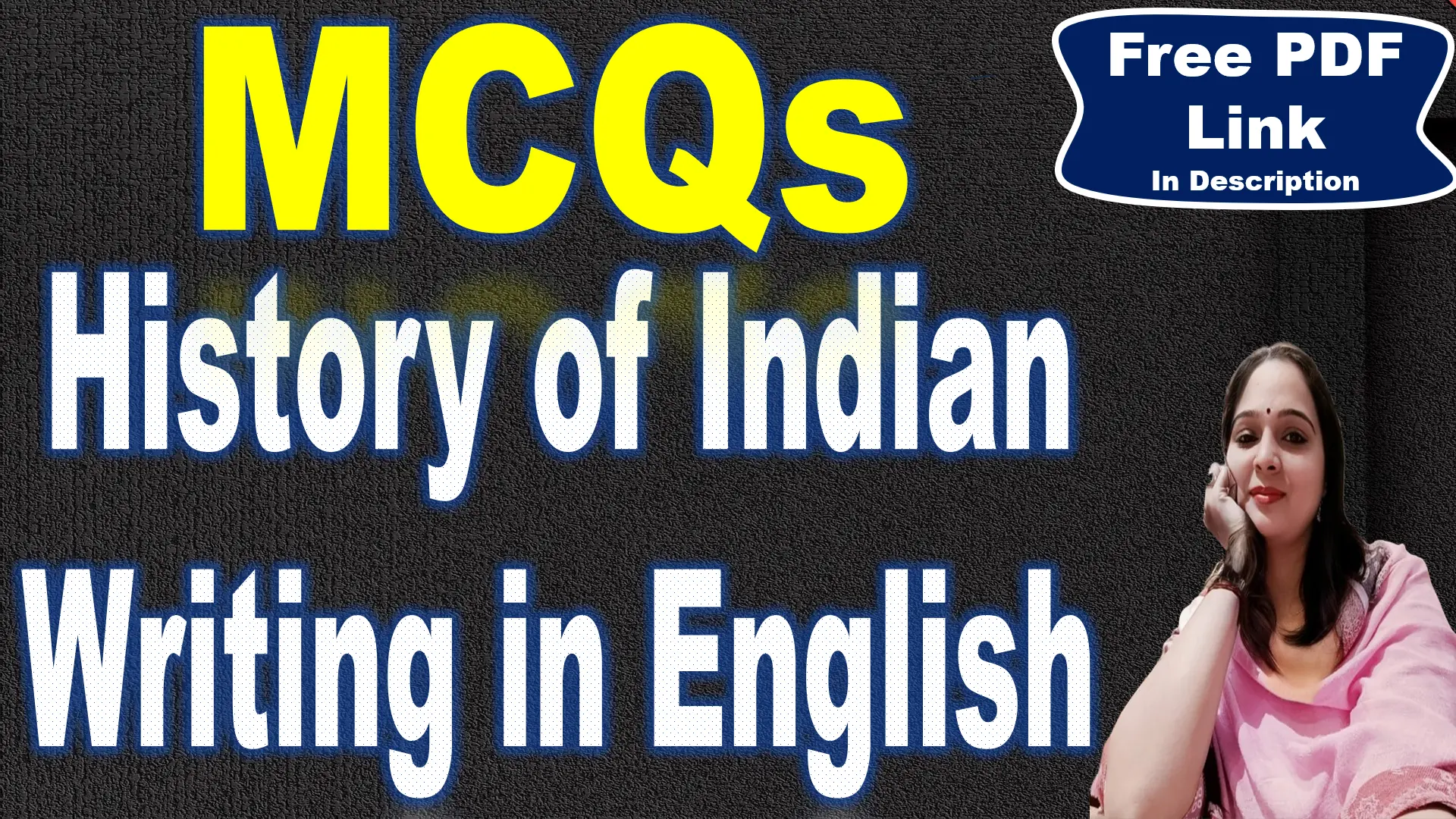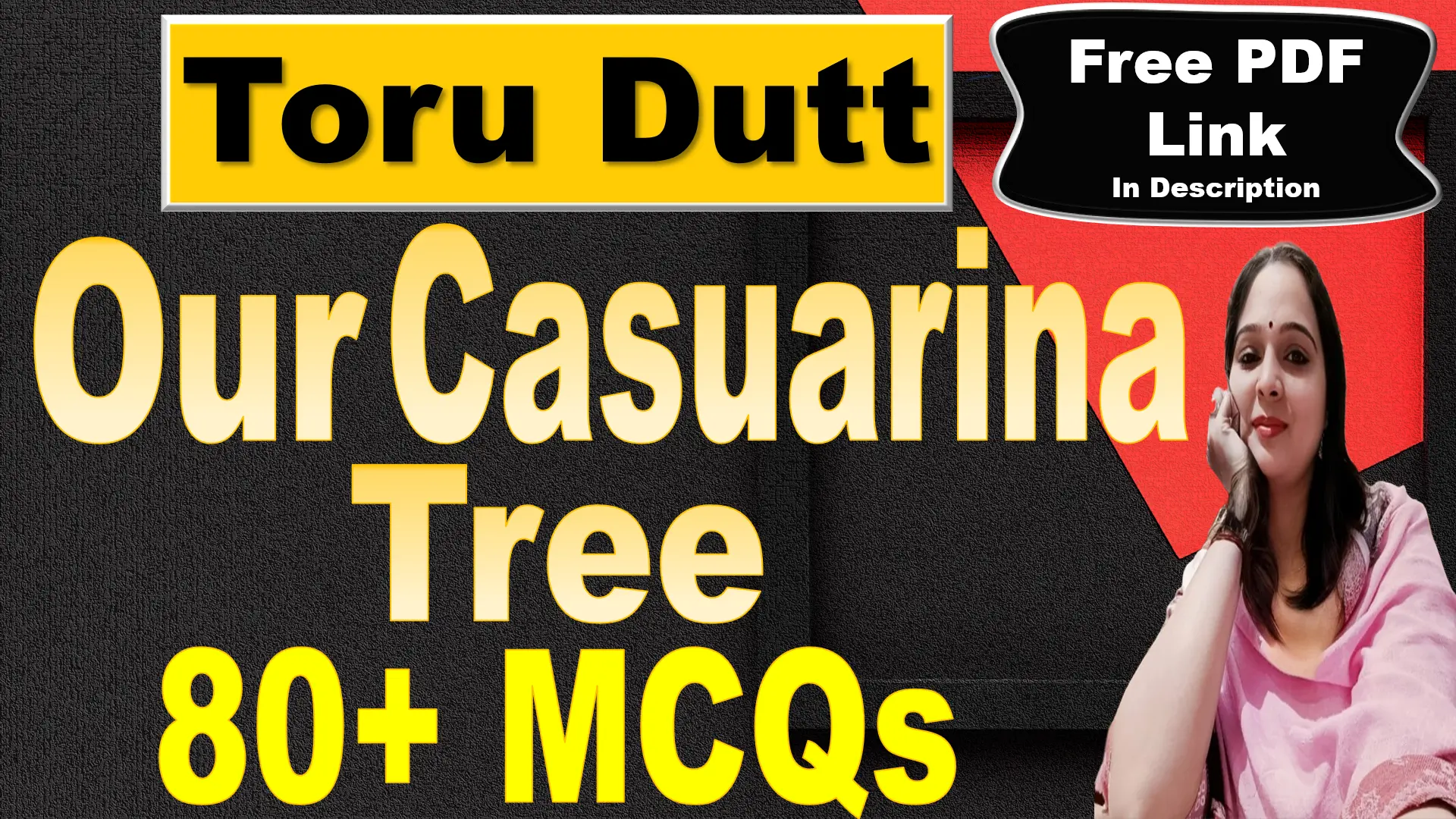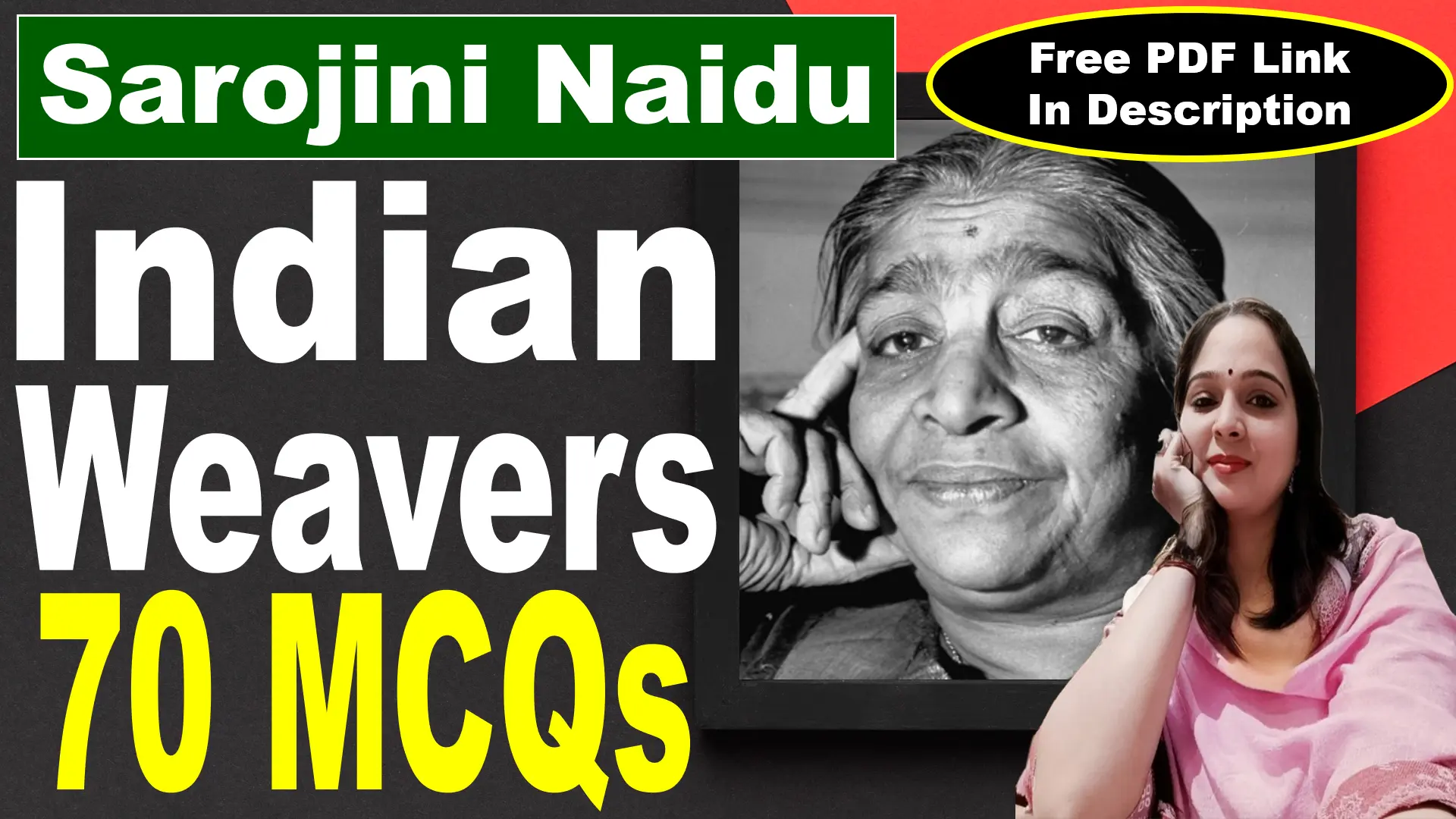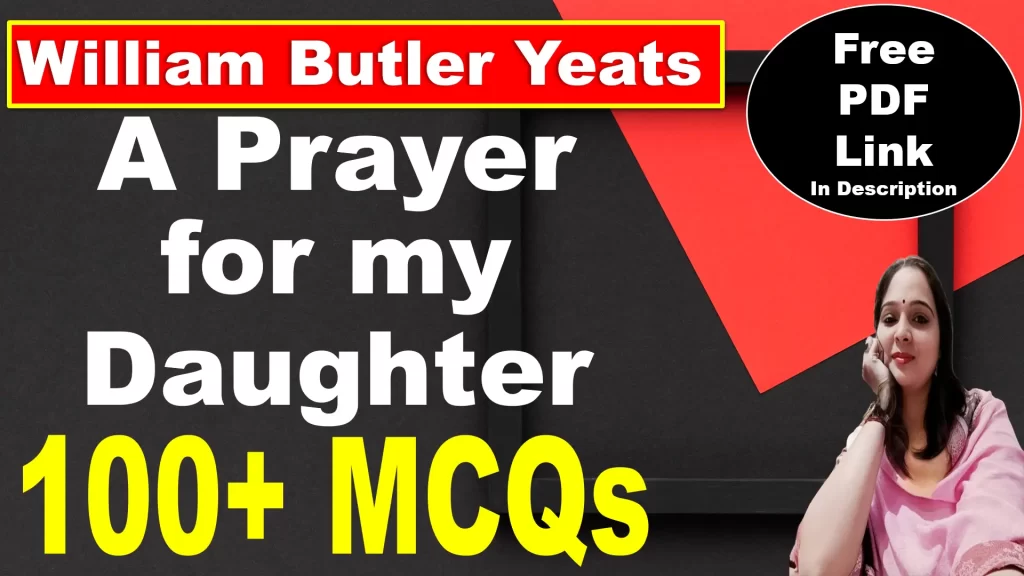
81. The line “assault and battery of the wind” employs which device to depict nature’s force?
a) Allusion
b) Simile
c) Personification
d) Hyperbole
Answer: c) Personification
Explanation: The phrase “assault and battery of the wind” uses personification, a literary device in which human qualities or actions are attributed to non-human entities. Here, the wind is described as if it can commit “assault and battery,” which are legal terms referring to violent actions. This gives the wind a human-like force and aggression, emphasizing its power in nature. Personification helps to make the description more vivid and relatable by presenting the wind as an active, forceful being, rather than just an element of nature.
82. What device is used in “the Horn of Plenty is undone” to reference classical mythology?
a) Allusion
b) Hyperbole
c) Irony
d) Synecdoche
Answer: a) Allusion
Explanation: “The Horn of Plenty is undone” is an allusion to the classical mythological symbol of the cornucopia, or Horn of Plenty, which signifies abundance and prosperity. In Greek mythology, this horn is a symbol of endless supply and good fortune. Yeats uses this reference to symbolize the loss or depletion of material wealth or abundance. The phrase conveys a sense of misfortune or emptiness, suggesting that the wealth or gifts that were once plentiful are now lost or undone, aligning with the poem’s themes of impermanence and societal decay.
83. What does the line “Once more the storm is howling” primarily suggest?
a) A literal storm threatening the house
b) A recurring turmoil in the poet’s world
c) A peaceful night interrupted
d) A celebration of nature’s power
Answer: b) A recurring turmoil in the poet’s world
Explanation: The line “Once more the storm is howling” suggests a recurring sense of turmoil or unrest in the poet’s world. The storm symbolizes chaos, both in nature and in the social or political sphere. The repetition of the storm’s howling suggests that this chaos is not an isolated event but a continuous force that Yeats perceives in his environment. It reflects the instability and emotional turbulence of the world at the time, particularly the political strife and uncertainty Yeats experienced.
84. In “the future years had come, / Dancing to a frenzied drum,” what is the poet imagining?
a) A joyful celebration
b) A chaotic and troubling future
c) A musical performance
d) His daughter’s adulthood
Answer: b) A chaotic and troubling future
Explanation: In these lines, Yeats imagines a chaotic and troubling future, symbolized by “dancing to a frenzied drum.” The imagery of a drumbeat associated with frenzied dancing reflects the idea of a future that is out of control, marked by confusion and instability. The drum’s frantic rhythm conveys the idea that time is moving rapidly toward an uncertain and potentially destructive future, and Yeats fears for his daughter’s place in such a world. This imagery underscores the poet’s anxiety about the future and its unpredictable nature.
85. What does “May she be granted beauty and yet not / Beauty to make a stranger’s eye distraught” imply about Yeats’s hopes?
a) He desires balanced beauty without vanity
b) He wants her to be unnoticed
c) He fears her beauty will fade
d) He values inner beauty over outer
Answer: a) He desires balanced beauty without vanity
Explanation: Yeats desires that his daughter possess beauty, but not in a way that would lead to vanity or the distraction of others. He hopes for her to have a form of beauty that is balanced and not excessive, meaning that her physical appearance should not dominate her identity or create turmoil. The poem implies that beauty should complement other qualities, such as kindness and virtue, without overshadowing them or leading to negative consequences like superficiality or objectification.
86. The line “It’s certain that fine women eat / A crazy salad with their meat” critiques what?
a) Women’s eating habits
b) The abundance of wealth
c) The lack of manners in society
d) The irrational choices of beautiful women
Answer: d) The irrational choices of beautiful women
Explanation: The line “It’s certain that fine women eat / A crazy salad with their meat” critiques the irrational or disordered choices that beautiful women often make, particularly when they focus too much on their appearance. Yeats uses the metaphor of a “crazy salad” to suggest that beauty can lead to erratic or illogical decisions, such as prioritizing outward appearance over deeper, more meaningful qualities. The line critiques the way society often encourages women to make decisions based on beauty, rather than wisdom or virtue.
87. What does “Hearts are not had as a gift but hearts are earned” suggest about love?
a) It is freely given
b) It requires effort and virtue
c) It depends on beauty
d) It is unattainable
Answer: b) It requires effort and virtue
Explanation: This line suggests that love is not something that can be passively received as a gift, but rather something that must be earned through effort, sincerity, and virtue. Yeats emphasizes that genuine love is based on qualities such as kindness, trust, and emotional connection, rather than mere physical attraction or superficial traits. The idea of earning a heart reflects the notion that true affection is built over time through meaningful actions and mutual respect.
88. In “May she become a flourishing hidden tree,” what kind of life does Yeats envision for his daughter?
a) A public and celebrated one
b) A life of intellectual pursuit
c) A life of constant change
d) A quiet and rooted one
Answer: d) A quiet and rooted one
Explanation: Yeats envisions his daughter living a life that is quiet, rooted, and peaceful, symbolized by the “flourishing hidden tree.” The tree is hidden, suggesting that true growth and fulfillment come from within, away from the spotlight. Yeats wishes for his daughter to thrive in a stable, grounded environment, living a life marked by inner strength, peace, and virtue, rather than one driven by fame, external validation, or public attention. The “hidden” aspect also suggests a life that is not defined by external appearances or societal pressures.
89. What is the significance of “An intellectual hatred is the worst” in the poem?
a) It praises intellectualism
b) It warns against the dangers of rigid opinions
c) It critiques physical violence
d) It reflects Yeats’s personal grudges
Answer: b) It warns against the dangers of rigid opinions
Explanation: Yeats warns that intellectual hatred—rigid, dogmatic beliefs that are held with hostility—can be the most destructive form of hatred. He suggests that when people become entrenched in their opinions and beliefs, they lose the ability to engage with others in a compassionate, open-minded way. Intellectual hatred leads to division, conflict, and an inability to connect with others on a human level. Yeats critiques this type of intellectual pride, emphasizing that it stifles growth and meaningful discourse.
90. The line “The soul recovers radical innocence” refers to what process?
a) A return to childhood purity
b) A rejection of societal norms
c) A spiritual awakening free of hatred
d) A loss of experience
Answer: c) A spiritual awakening free of hatred
Explanation: The line “The soul recovers radical innocence” refers to a process of spiritual awakening, where the individual becomes free from the corrosive effects of hatred and negativity. “Radical innocence” suggests a return to a pure, untainted state of being, where the soul is not clouded by resentment, anger, or prejudice. Yeats believes that when one sheds these destructive emotions, they are able to return to a more authentic and innocent way of living, free from the burdens of the past and open to a more harmonious existence.
91. What does “How but in custom and in ceremony / Are innocence and beauty born?” emphasize?
a) The futility of tradition
b) The value of structured, traditional life
c) The randomness of beauty
d) The rejection of modern values
Answer: b) The value of structured, traditional life
Explanation: Yeats emphasizes the importance of tradition and ceremony in preserving innocence and beauty. In this line, he suggests that structured, time-honored practices, such as rituals and customs, are the foundation for maintaining purity and virtue in a chaotic world. These traditions provide a stabilizing force, helping individuals live in a way that protects them from the dangers of a disorderly, modern society. Yeats believes that innocence and beauty thrive in the context of ceremony and tradition, which provide structure and meaning.
92. In “Ceremony’s a name for the rich horn, / And custom for the spreading laurel tree,” what do “horn” and “tree” symbolize?
a) Wealth and growth
b) Chaos and order
c) Beauty and intelligence
d) Past and future
Answer: a) Wealth and growth
Explanation: In this line, “horn” refers to the Horn of Plenty, a symbol of wealth, abundance, and prosperity, while “tree” refers to the laurel, which symbolizes growth, honor, and stability. The “rich horn” suggests that ceremony brings wealth and abundance into one’s life, while the “spreading laurel tree” symbolizes growth and enduring strength. Together, they highlight the dual importance of material wealth and personal growth, both of which are nurtured through the practices of ceremony and custom, which Yeats values for their stabilizing effect.
93. What is the overall mood of the poem as Yeats reflects on his daughter’s future?
a) Nostalgic and sentimental
b) Joyful and carefree
c) Anxious yet protective
d) Bitter and disillusioned
Answer: c) Anxious yet protective
Explanation: The poem conveys a mood of anxiety mixed with a protective, fatherly concern for his daughter’s future. Yeats is deeply worried about the turbulent world she will inherit, marked by chaos, political unrest, and the potential dangers of excessive beauty. However, this anxiety is tempered by a desire to shield her from these forces and guide her toward a virtuous life rooted in tradition and stability. The protective aspect of the mood is clear in his hopes for her to remain grounded and true to her inner beauty and kindness.
94. Which of the following best describes Yeats’s attitude toward modernity in the poem?
a) He embraces it fully
b) He views it with suspicion and prefers tradition
c) He is indifferent to it
d) He celebrates its chaos
Answer: b) He views it with suspicion and prefers tradition
Explanation: Yeats is wary of modernity and the upheaval it brings, favoring the stability provided by tradition. In the poem, he expresses concern about the chaos and turmoil of the modern world, which he fears will negatively affect his daughter’s future. Yeats sees tradition and ceremony as protective forces against the instability of modern life, and he longs for a simpler, more stable existence rooted in the values of the past. His preference for tradition over modernity is evident throughout the poem’s themes.
95. How does the poem reflect Yeats’s views on Irish identity?
a) Through references to Irish mythology
b) By celebrating urban progress
c) Through the landscape and a desire for stability
d) By rejecting Irish traditions
Answer: c) Through the landscape and a desire for stability
Explanation: The poem reflects Yeats’s views on Irish identity by incorporating imagery of the Irish landscape, a recurring theme in his work. He associates the stability and rootedness of the land with a sense of cultural identity and tradition, which he values deeply in the face of political turmoil. Yeats’s desire for stability, rooted in the landscape, reflects his wish for Ireland to remain connected to its past, its traditions, and its natural beauty, rather than being swept away by the turbulence of the present or the forces of modernization.
96. What might the “tower” mentioned in the second stanza refer to?
a) A mythological structure
b) Thoor Ballylee, Yeats’s home
c) A symbol of isolation
d) A church steeple
Answer: b) Thoor Ballylee, Yeats’s home
Explanation: The “tower” mentioned in the second stanza likely refers to Thoor Ballylee, Yeats’s home in County Galway. This tower, which Yeats used as both a residence and a symbol of his connection to the Irish landscape, is significant in his poetry. Thoor Ballylee became a retreat for Yeats, a place where he could reflect on his writing and personal life. The tower symbolizes both a physical and emotional sanctuary, a space of refuge from the external chaos that Yeats often describes in his poems.
97. Which emotion does Yeats explicitly reject as destructive in the poem?
a) Hatred
b) Love
c) Fear
d) Pride
Answer: a) Hatred
Explanation: Yeats explicitly rejects hatred as a destructive force in the poem. He describes intellectual hatred as particularly harmful, as it leads to division and conflict. Yeats views hatred as an emotion that consumes the soul, preventing growth, understanding, and true connection. He urges that to live a fulfilling and virtuous life, one must be free from hatred, as it clouds judgment and robs individuals of their inner peace. The poem advocates for a return to kindness, love, and inner purity as antidotes to destructive emotions like hatred.
98. How does Yeats connect his daughter’s future to his own past experiences?
a) By referencing his childhood
b) Through his disappointment with admired minds
c) By recounting his successes
d) Through his political achievements
Answer: b) Through his disappointment with admired minds
Explanation: Yeats connects his daughter’s future to his own past experiences through his disillusionment with the “minds” he has admired throughout his life. These minds, which he once looked up to, have “prospered little” in the current turbulent environment. Yeats reflects on how intellectual ideals and revered figures often fail to thrive in the chaotic, hostile world he perceives. This personal disappointment informs his concern for his daughter, as he fears she may also struggle in the same world, despite his hopes for her to lead a life of innocence and virtue.
99. What role does nature play in the poem’s imagery?
a) A source of comfort and peace
b) A symbol of human progress
c) A neutral backdrop
d) A threatening and uncontrollable force
Answer: d) A threatening and uncontrollable force
Explanation: Nature plays a significant role in the poem’s imagery as a threatening and uncontrollable force. The storm, howling winds, and tumultuous sea represent the external chaos and instability that Yeats fears will affect his daughter’s future. While nature can be beautiful, Yeats emphasizes its potential for destruction and unpredictability, mirroring the dangers of the modern world. The imagery of nature reinforces his desire for stability and protection from the uncontrollable forces that threaten personal well-being and societal order.
100. Which of the following influences is NOT explicitly mentioned in the poem?
a) Classical mythology
b) Irish landscape
c) Christian theology
d) Personal relationships
Answer: c) Christian theology
Explanation: Christian theology is not explicitly mentioned in the poem. While Yeats often explored spiritual and religious themes in his work, this poem does not directly reference Christian concepts or theology. Instead, the poem focuses on the personal, philosophical, and cultural influences on Yeats’s thoughts regarding his daughter’s future, emphasizing the importance of tradition, ceremony, and emotional balance over material wealth or intellectual pride. Classical mythology, Irish landscape, and personal relationships are the key influences mentioned in the poem.
